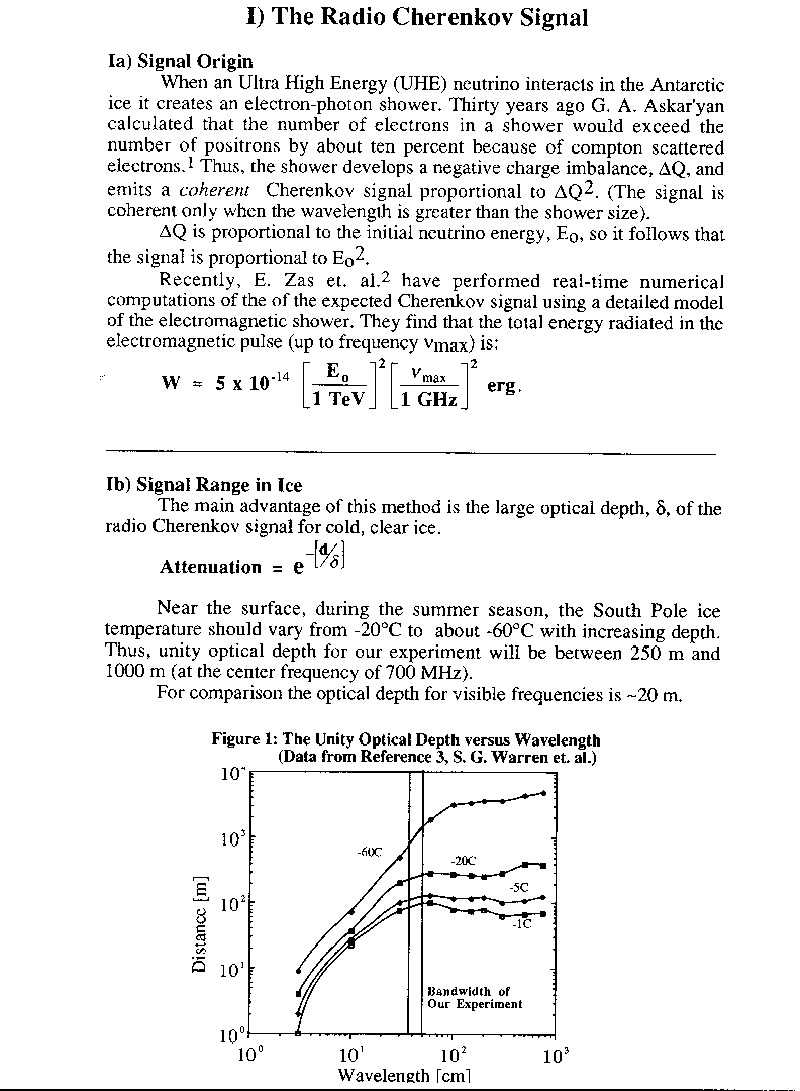 Radio Cerenkov concept
Radio Cerenkov concept
Neutrinos can be detected through the radio signal generated via the Cerenkov radiation of charged particles produced by the neutrinos interacting in the Antarctic ice.
Charged particles exceeding the speed of light in ice emit Cerenkov light. The radio dielectric constant of pure ice is about 3 so that the speed of light in ice is roughly 60% that in vacuum. The resulting Cerenkov radiation cone has a half angle of about 56 degrees. The Cerenkov radiation for a shower of particles that is bunched tighter than a wavelength is coherent and proportional to the square of the net charge. Since positive and negative particles in the shower have different cross sections and properties a typical neutrino interaction will produce a shower with about half of the incident neutrino energy and with a net charge of 10 to 20%. Thus high energy, e.g. PEV, neutrinos could be detected by a radio receiver at distances of scale a kilometer.
The shower shape and wavelength affects the beaming of the coherent radio signal from the shower.
Return to the Smoot Group page for a complete description of the Smoot group's research activities.